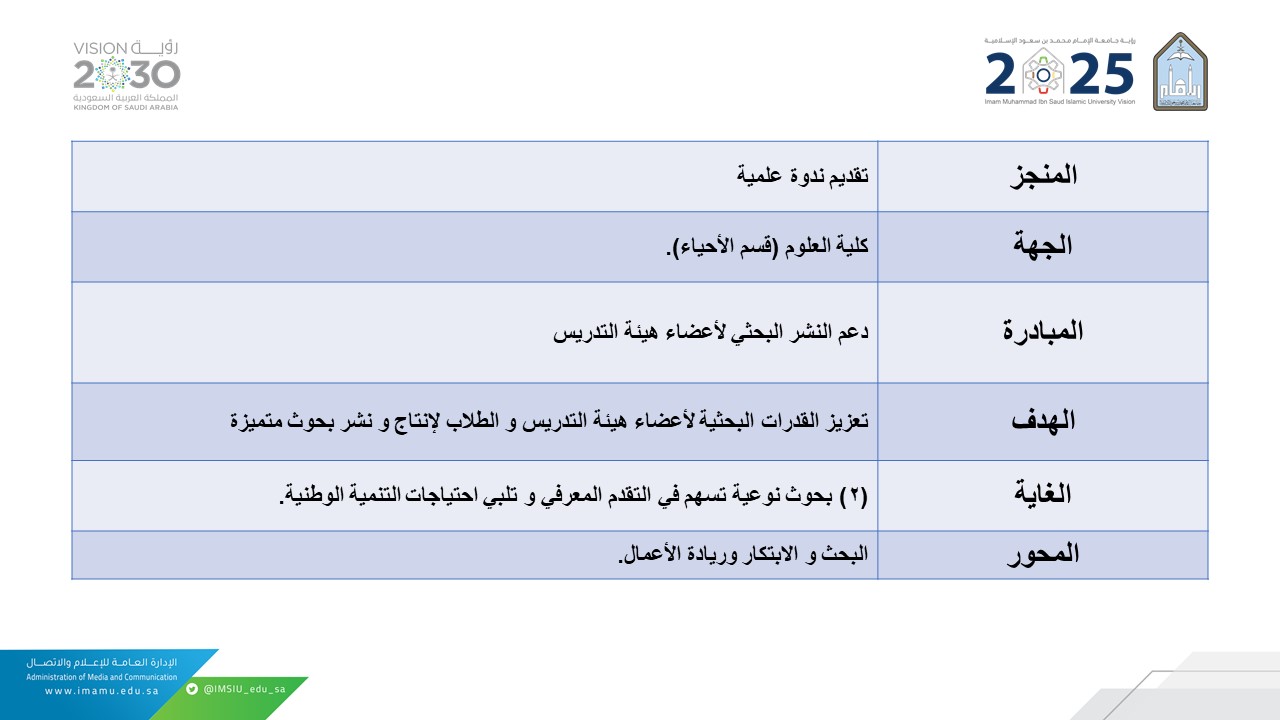تحت إشراف قسم الأحياء و بالتعاون مع مركز البحوث بالكلية أقيمت يوم الاثنين 19 / جمادي الآخرة / 1442هـ ندوة علمية بعنوان:
الخصائص الجزيئية لنبات الرمث في المملكة العربية السعودية
قدمتها د. موضي السبيعي في تمام الساعة 10:15 ص عن بعد عن طريق نظام البلاك بورد.
ملخص البحث:
The purpose of write this paper is to study the genetic variability between and within different Halosylon salicornicum populations in different regions of Saudi arabia Kingdom, using the determination of genetic fingerprint method by Inter Simple Sequence Repeat (ISSR). Because this plant highly vulnerable to depletion by humans in all places of existence, it is an economically valuable plant where raft is an important pastoral resource in central and northern Arabia. It also has multiple medical uses. It is a plant that can withstand abiotic stresses such as drought and high temperature, making it suitable for cultivation in marginal lands in arid areas. All of the above was a catalyst for plant characterization using a number of Haloxylon salicornicum samples, collected from different regions of Saudi Arabia to find out the genetic variation of species, genetic diversity in knowing the plant community is an essential step towards the design of programs for plant breeding as well as preserved from extinction. This was done using the Inter Simple Sequence Repeat (ISSR). The results showed there were significant differences and molecular differences between plant samples. The average polymorphism between the genetic inputs of the studied Haloxylon salicornicum samples was 53.7%, and this percentage of genetic variability is significant for progress in growth and plant regeneration in the face of unfair practices against it, in addition to adverse environmental conditions in most years. As evidenced by the percentage of matrix similarity. The ISSR results indicate that the genotype between five different regions genotypes ranged from 0.365 to 0.527, indicating that Haloxylon salicornicum is a local plant capable of surviving and adapting to the environmental conditions in Saudi Arabia through the positive change in the genetic makeup of this species.

